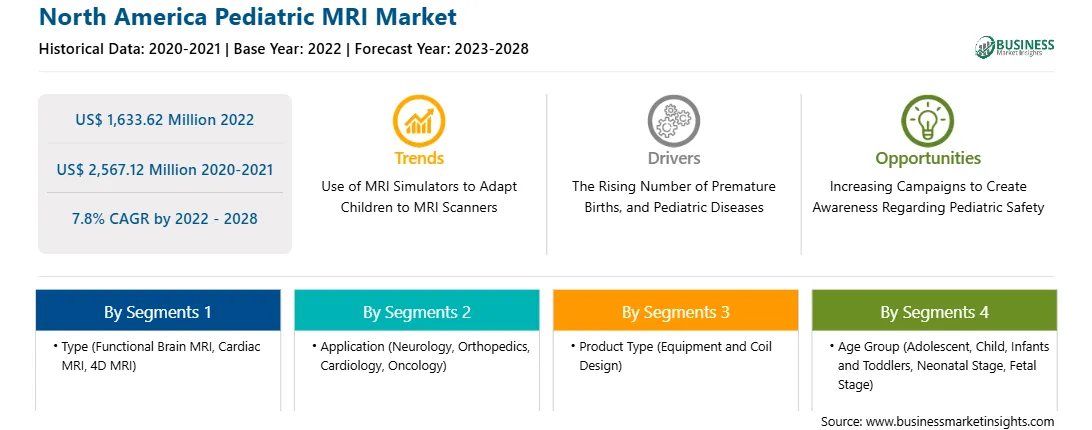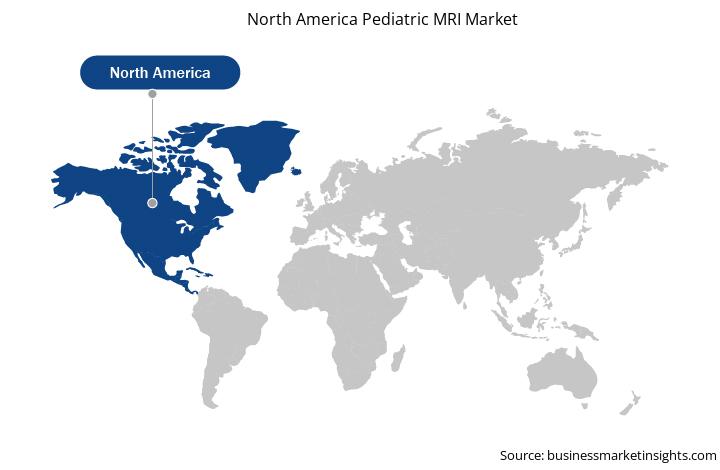The adoption of advanced technologies in healthcare settings, such as hospitals and pediatric specialty clinics, is increasing across the region, improving patient safety and minimizing the overall turnaround time and hospital stay. The incorporation of artificial intelligence (AI), machine learning (ML), the Internet of Things (IoT), and other new technologies in healthcare, medicine, and scientific research has become increasingly important. Advancements in the miniaturization of sensors and other technologies also offer opportunities to collect physiological and functional data directly from patients participating in clinical trials, especially in children. Along with cell phones and other digital platforms, sensors provide a versatile tool for assessing patient responses to investigational treatments in the field of pediatrics.
Since the COVID-19 pandemic, the number of children suffering from mental health problems have increased rapidly. In October 2022, the President of the US announced prioritizing the expansion of the Pediatric Mental Health Care Access Awards program. The program allows pediatric care providers to ensure telehealth services for expert mental health care. As it is normal for young patients to feel anxious or stressed during treatment, several children's hospitals, such as Sanford Children's, Children's Memorial Hermann, and Children's Minnesota, use interactive patient engagement technology to entertain and distract patients undergoing medical procedures or treatments. Apps can help parents access their children's health records and additional information. For example, Milestone Tracker, an app developed by CDC, provides checklists for parents to ensure their children are developing properly between the ages of 2–5. Similarly, SoftSpot is an FDA-approved and the Health Insurance Portability and Accountability Act (HIPAA)-compliant app powered by AI and Computer Vision (CV) technology. The app measure’s the skulls of newborn babies to detect cases of plagiocephaly or brachycephaly.
In March 2017, Royal Philips and Phoenix Children's Hospital announced a 15-year agreement worth US$ 65 million. Phoenix Children’s and Royal Philips developed dose reduction systems and other technologies that follow pediatric MRI protocols, which are factory standards across the region. They also have an advanced 3D print laboratory that constructs life-size models of patients to study heart and brain physiology using MRI. Furthermore, research on advanced MRI technologies is also increasing across the region. For instance, in September 2019, researchers from the University of Colorado School of Medicine identified a new imaging method named “fast MRI.” The method is effective in analyzing pediatric traumatic brain injuries (TBI), thereby eliminating risks related to radiation exposure and anesthesia.
Therefore, the adoption of new technologies in healthcare is driving the growth of the North America pediatric MRI market.
The North America pediatric MRI market is segmented into three major countries—the US, Canada, and Mexico. The US holds the largest market share owing to factors such as the increasing burden of pediatric diseases, rising number of product launches, and growing R&D activities to develop advanced pediatric MRI devices. The rising number of premature births, increasing prevalence of pediatric diseases, and high demand for preventive care and imaging solutions drive the demand for pediatric imaging systems. According to the Centers for Disease Control and Prevention (CDC), around 9.2 million children in the US are admitted to the emergency department due to accidental injuries caused by falls, road traffic accidents, and burns. Increasing cases of traumatic injuries propel the demand for MRI solutions.
Strategic insights for the North America Pediatric MRI provides data-driven analysis of the industry landscape, including current trends, key players, and regional nuances. These insights offer actionable recommendations, enabling readers to differentiate themselves from competitors by identifying untapped segments or developing unique value propositions. Leveraging data analytics, these insights help industry players anticipate the market shifts, whether investors, manufacturers, or other stakeholders. A future-oriented perspective is essential, helping stakeholders anticipate market shifts and position themselves for long-term success in this dynamic region. Ultimately, effective strategic insights empower readers to make informed decisions that drive profitability and achieve their business objectives within the market. The geographic scope of the North America Pediatric MRI refers to the specific areas in which a business operates and competes. Understanding local distinctions, such as diverse consumer preferences (e.g., demand for specific plug types or battery backup durations), varying economic conditions, and regulatory environments, is crucial for tailoring strategies to specific markets. Businesses can expand their reach by identifying underserved areas or adapting their offerings to meet local demands. A clear market focus allows for more effective resource allocation, targeted marketing campaigns, and better positioning against local competitors, ultimately driving growth in those targeted areas.North America Pediatric MRI Strategic Insights

North America Pediatric MRI Report Scope
Report Attribute
Details
Market size in 2022
US$ 1,633.62 Million
Market Size by 2028
US$ 2,567.12 Million
Global CAGR (2022 - 2028)
7.8%
Historical Data
2020-2021
Forecast period
2023-2028
Segments Covered
By Type
By Application
By Product Type
By Age Group
By End User
Regions and Countries Covered
North America
Market leaders and key company profiles
North America Pediatric MRI Regional Insights

North America Pediatric MRI Market Segmentation
The North America pediatric MRI market is segmented based on type, application, product type, age group, end user, and country. Based on type, the North America pediatric MRI market is segmented into functional brain MRI, cardiac MRI, 4D MRI, and others. The functional brain MRI segment held the largest market share in 2022.
Based on application, the North America pediatric MRI market is segmented into neurology, orthopedics, cardiology, oncology, and others. The neurology segment held the largest market share in 2022.
Based on product type, the North America pediatric MRI market is bifurcated into equipment and coil design. The equipment segment held a larger market share in 2022.
Based on age group, the North America pediatric MRI market is segmented into adolescent (11-18 Years), child (2-11 Years), infants and toddlers (28 Days-23 Months), neonatal stage (0-27 Days), and fetal stage. The adolescent (11-18 Years) segment held the largest market share in 2022.
Based on end user, the North America pediatric MRI market is segmented into hospitals, pediatric clinics, diagnostic centers, and others. The hospitals segment held the largest market share in 2022.
Based on country, the North America pediatric MRI market is segmented into the US, Canada, and Mexico. The US dominated the North America pediatric MRI market share in 2022.
Advanced Imaging Research Inc; Aspect Imaging Ltd; GE HealthCare Technologies Inc; Hyperfine Inc; Koninklijke Philips NV; LMT Medical Systems GmbH; NORAS MRI products GmbH; Siemens Healthineers AG; and Time Medical Holding are some of the leading players operating in the North America pediatric MRI market.
The North America Pediatric MRI Market is valued at US$ 1,633.62 Million in 2022, it is projected to reach US$ 2,567.12 Million by 2028.
As per our report North America Pediatric MRI Market, the market size is valued at US$ 1,633.62 Million in 2022, projecting it to reach US$ 2,567.12 Million by 2028. This translates to a CAGR of approximately 7.8% during the forecast period.
The North America Pediatric MRI Market report typically cover these key segments-
The historic period, base year, and forecast period can vary slightly depending on the specific market research report. However, for the North America Pediatric MRI Market report:
The North America Pediatric MRI Market is populated by several key players, each contributing to its growth and innovation. Some of the major players include:
The North America Pediatric MRI Market report is valuable for diverse stakeholders, including:
Essentially, anyone involved in or considering involvement in the North America Pediatric MRI Market value chain can benefit from the information contained in a comprehensive market report.